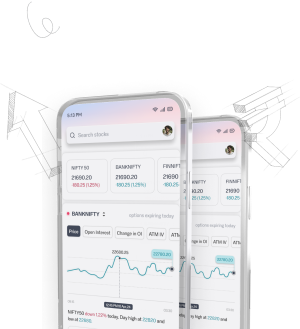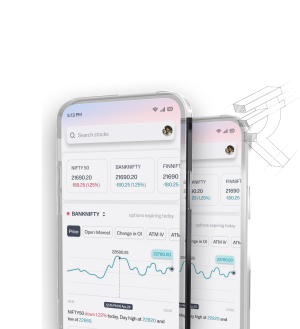Understanding the Risk of Short Selling in the Indian Stock Market
Short selling in the Indian stock market can be very risky. It's a process to make money from a falling market but really risky too.
Introduction
It simply means that one bets against the rise of the stock prices. The call can be an easy one. In India, all rules concerning short selling are decided by SEBI. We also need to see how changes taking place in the market situation, in this case the changes caused during the pandemic, in relation to COVID-19, impact short selling.
This article takes you through the basic tenets of short selling. In reference to this phenomenon, we discuss the rules behind the scene and how that impacts us and our trading activities across the Indian stock market. We intend to explain all about short selling so that we can use the same to bring in a difference in our trading strategies.
Key Takeaways
- Short selling, in India, as per SEBI rules, happens on an intra-day basis.
- The risks that could be involved in short selling are just enormous, and this action is only appropriate for a more seasoned trader.
- In reality, short selling is reliant on an argument about the point of market conditions and timing. Intelligence of rules and means, such as the SLBM, is indispensable.
- There are normally several risks associated with being a short seller, and the risks may turn into huge losses arising from a squeeze.
- Short selling can also be a powerful way of providing protection to investments and may offer high intact returns during a falling market.
Introduction to Short Selling in India
Short selling has become one of the important trading strategies in India after 2008. India had been banning short selling till 2008. In those days, from 2001 to 2008, short selling was banned in India. Later, it was repealed with some new rules and regulations to safeguard investors.
Trading practices have developed over time. Short selling was also made subject to some restriction during the time of pandemic from March 2020 to October 2020 for price stabilization in the market. It was only in 2007 that SEBI had framed a guideline for securities borrowing and lending, after which short selling was permitted to both retail and institutional investors, which boosted the market.
Now around 185 securities in the segment of Futures and Options can be short-sold. It is one of the strategies an investor applies; however, the restrictions are stringent. India has also banned naked short selling due to the reason that it may drive the stock prices lower and may harm market liquidity.
Understanding about Short Selling in India
Understanding about short selling in India goes like:
- Short Interest Ratio: It provides the investors with a picture of the way share prices could forecast in subsequent days.
- Days-to-Cover Ratio: This shows the demand in the market and the stocks' status based on short stocks, as compared to the volatility of trading.
In present times, the issue of short selling is viewed in an even more ambivalent light, yet with more acceptability. It is said to depress the stock prices and also the market sentiment. However, in a bear market or during the occurrence of bad company fundamentals, short selling would help the trader earn money by bringing in a falling stock price.
What is Short Sale?
Short selling can be slightly complicated, but it is one way that sophisticated investors profit from the weakening of the share price. A short sale involves selling borrowed shares, and the profit comes from buying those shares for a lesser price. A short sale capitalizes on the predicted price decrease of the market.
How to Short Sell
- Borrowing the shares: The first step in short selling involves borrowing the shares from a broker.
- Sale of Stock: The stock borrowed is sold in the market, thus raising cash.
- Purchase of Stock: In the event that the stock price decreases, the shares are bought back at a lower price.
- Return of Stock: The shares are returned to the lender and the profit from the price difference remains.
The key useful statistics in short selling are:
- Days to Cover: This is the total number of trading days that will at least be required to cover all the shorted stocks.
- Short Interest Ratio: This demonstrates the volume of shorted stocks compared to the corresponding available shares. These two metrics describe the trends and sentiment in the market.
Risks and Benefits
The high risks entail do not permit benefits from short selling in any form. In the absence of the strategy working, the investor could lose a lot. While buying stocks means that the actual loss is limited to the original investments, in short selling, the losses could be of an amount larger than the investment amount. Furthermore, one is needed to remit money for borrowing the shares and keep substantial funds in the account.
Process of Short Selling
The stock market in India is not very conducive to short selling. It is when traders sell a stock they do not own, in the hope it will fall in price. You would do well to understand how brokerage firms facilitate this, and the role margin accounts play .
The Mechanics of Short Selling
A margin account is required for a short sale. The account allows a trader to rake money used to transact share sales. He hopes the stock price would fall low enough for him to repurchase after he has sold it to repay the loan.
In some securities in India, short selling is allowed, and orders are settled intra-day. The order has to be squared before close of day, or else firms close out the transaction around 3:15 PM to cut down the risks.
The Role of Brokerage Firms
Brokerage firms are crucial to the short-selling process because they grant the trader access to the relevant markets and facilitate the borrowing of securities. Leveraging the trader's shares, which are placed in the demat account of the firm, is considered the provision of enough collateral by the firm.
Prices can possibly change, attract massive losses, and trigger stop loss orders. Unless the trader closes their position, then they may end up suffering colossal losses. This shows that traders need to be as cautious as possible in their trading session.
Why Do Investors Sell Stocks Short?
There are several reasons why investors short-sell a stock:
To Make Money on an Overvalued Stock
This provides an opportunity for the investor to earn money on stocks that have been overvalued for a long period of time. The general concept here is to sell the stock with the expectation that they would lose value, then buy them at a much cheaper price.
Hedging Your Portfolio
Short selling acts as protection on the investments we make. It ensures that a portfolio is fully insured. When we sell short a stock that we already own within a portfolio, we will not be hurt or will be, at the very least, less hurt by a downwards trend in the markets.
Pros and Cons of Short Selling
High Profit Potential
The mechanism of short selling, per se, alludes to the high profit potential that a bear market offers. This is so because it engages in the business of selling borrowed shares and covering them at a later date using shares that were both bought back at a later date or at a lower price.
For example, suppose that an investor goes short against a purchase of 20 stocks of a company at Rs. 200. The investor covers the same at 175, thereby pocketing a profit of Rs. 5000.
Risks of Short Selling
The risks that weigh against short selling, on the contrary, are also mammoth. Unlike regular stock purchases, in short selling the losses are capped, but a shorting of a stock could result in unlimited losses in case its price does not fall but rather leaves.
For instance, if the price of one such stock really goes up and up rather than down, an investor might lose a fortune. After all, the act of short selling needs cash to be deposited in advance. Should the stock price decline by 25%, then more cash may be required.
Short Selling NIFTY and SENSEX: The Basics
Short selling in broad market indices, such as NIFTY and SENSEX, should be approached with a great deal of care:
- Real Time: Short selling in India should cover within the day; otherwise, it would be converted to a delivery trade and needed to be covered on T+1.
- Market Events: Practically all of the economic events, such as the Union Budget or any amendments in policy, might have a direct impact on a short position. The market reaction post any such event can affect the profitability.
- Stop-loss Orders: One of the most essential points to remember is to enforce stop-loss orders while assuming a short selling position. It helps limit losses if the market turns against the investor.
Optimal Conditions for Selling Short
The critical conditions include the following:
- Downward Revenues and Earnings: Sinking fundamentals in the company signal a good time for short selling.
- Negative News Impact: Adverse news affecting a company or a sector provides an opportunity for short selling.
- High Valuation Levels: If the stocks are trading at high valuations levels compared to historical averages, then this signals a good level to short sell.
Therefore, market timing and being aware of market trends is of the essence to lessen the risks.
Market Movement
High impacts are usually brought by market movements on the short sellers since they undergo drastic changes in prices. The prices are changing continuously and if there are some sudden turns, it may lead to big losses of money.
Timing is everything with short selling and getting the timing wrong can lead to huge losses since the price can continue to move up, and there is no upper limit. Watching the trend in the stock movements and market conditions could decide the time for buying and selling.
Risk Factors in Short Selling
| Risk Factor | Description |
|---|---|
| Market Volatility | Stock prices can take unexpected movements and open the scope of unlimited losses. |
| Unlimited Losses | Stock prices theoretically can hit the sky and can potentially have huge losses in the portfolio. |
| Timing Problems | Trades that are not well-timed can be very expensive. |
| Regulatory Changes | New regulations can limit one's ability to short sell effectively. |
| Margin Requirements | A/R auctioned by the Exchange in case the margin provided is lower than the minimum requirements. |
Short Selling Rules in India
SEBI Regulations
SEBI plays an important role in the regulation of short selling in India:
- Permitted Categories: All categories of investors can short sell in the securities market.
- Naked Short Selling: Prohibition of naked short selling to protect the integrity of the market and maintain it.
- Eligible Securities: Around 185 securities in the futures and options segment are eligible for short selling
- Market Protection: The regulations by SEBI provide for the protection of the securities market for retail investors from malpractices and ensuring the efficiency of markets.
| Feature | Information |
|---|---|
| Eligible Categories | All categories of investors are permitted to short sell. |
| Naked Short Selling | It has huge market manipulation risk. |
| Eligible Securities | Approximately 185 securities in the futures and options market. |
Disclaimer
The content provided is for educational purposes only and does not constitute financial advice. For full details, refer to the disclaimer document.




